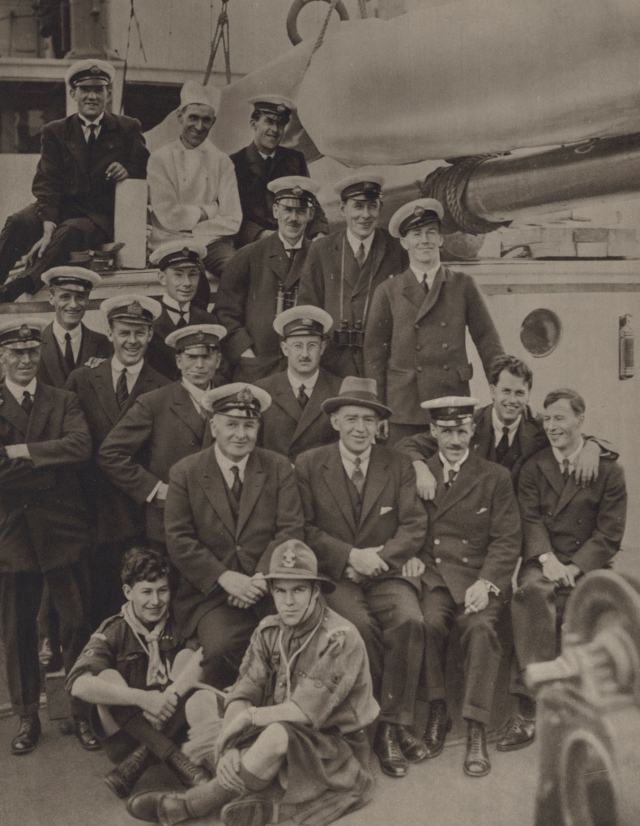
-
Polar Explorer Ernest Shackleton’s Lost Ship Finally Found On Ocean Floor
13 Jun 2024 by Heinrich in Tech/Sci, Vibe, World
[imagesource:cbc]
The Royal Canadian Geographical Society has announced that shipwreck hunters have finally found renowned Antarctic explorer Ernest Shackleton’s vessel Quest.
Not only was Shackleton aboard the Quest when he died of a heart attack in January 1922, but analysts also believe the ship may hold relics from excursions that were carried out until 1962, when the ship sank.
“Finding Quest is one of the final chapters in the extraordinary story of Sir Ernest Shackleton,” said John Geiger, expedition leader for the search and CEO of the society, in a news release. “Shackleton was known for his courage and brilliance as a leader in times of crisis. The tragic irony is that this was the only death to take place on any of the ships under his direct command.”
Shackleton’s death marked the end of what is known as the “heroic era” of Antarctic exploration.
On June 9, a group of international specialists used sonar equipment to discover Quest following a 17-hour search that covered roughly 24 nautical miles.
[image:wikicommons]
According to marine scientist and oceanographer David Mearns, head of the search, at a press briefing hosted by the society on Wednesday, the team spent months researching and analysing the area to determine where to hunt for the wreck before locating the vessel.
“We can definitively confirm that we have found the wreck of the Quest. She is intact. Data from high resolution side scan sonar imagery corresponds exactly with the known dimensions and structural features of this special ship. It is also consistent with events at the time of the sinking.’

[image:chrisbrackley/cangeo]
Shackleton was on what would have been his fourth expedition to Antarctica when he died at age 47 while docked on South Georgia Island in the South Atlantic. The celebrated polar explorer was buried there, and the ship and crew continued, trying to complete the so-called Shackleton-Rowett Expedition. But heavy ice made it difficult to complete the voyage, and Quest returned to Cape Town in South Africa, according to London’s Natural History Museum.
After being sold to a Norwegian company, the ship went on several other expeditions before it sank on May 5, 1962, after being crushed by ice in the Labrador Sea off of Canada. The crew evacuated and marked the ship’s final known location, which was 2.5 kilometres away from where the research expedition found it.

[image:norskelexicon]
“The fact that Quest has been found now, roughly in waters he would have passed had he succeeded in his dream of a Canadian Arctic expedition, it’s somehow fitting it should end here.”
The society is hoping to return to the wreck for the second phase of the expedition with an ROV, or remotely operated vehicle, later this year.
[source:cnn]Latest News
-
Thai Woman Sentenced To Death For Murdering 14 Friends With Cyanide In Shocking Killing Spree
[imagesource: Sararat Rangsiwuthaporn] A woman in Thailand, dubbed 'Am Cyanide' by Thai...
-
René Magritte Painting Sells For Record R2.1 Billion At Auction
[imagesource:renemagritte.org] A René Magritte painting portraying an eerily lighted s...
-
Brave Rape Survivor Alison Botha Faces New Challenge After Brain Surgery
[imagesource: Alison Botha] Gqeberha rape survivor Alison Botha, a beacon of resilience...
-
Get Ready For The Mother of All Celebrations As MCQP Turns 30
[imagesource:mcqp/facebook] Clutch your pearls for South Africa’s favourite LGBTQIA+ ce...
-
The Iconic Good Hope Centre Is Set For Redevelopment
[imagesource:capetown.gov] The City of Cape Town’s Mayoral Committee has approved the...
-






























